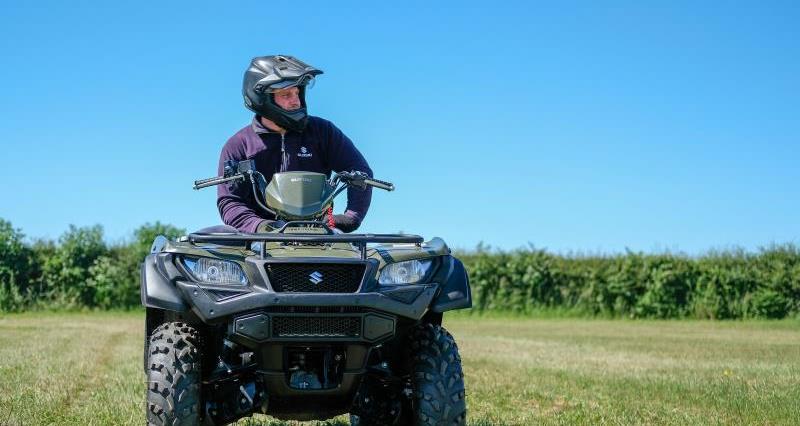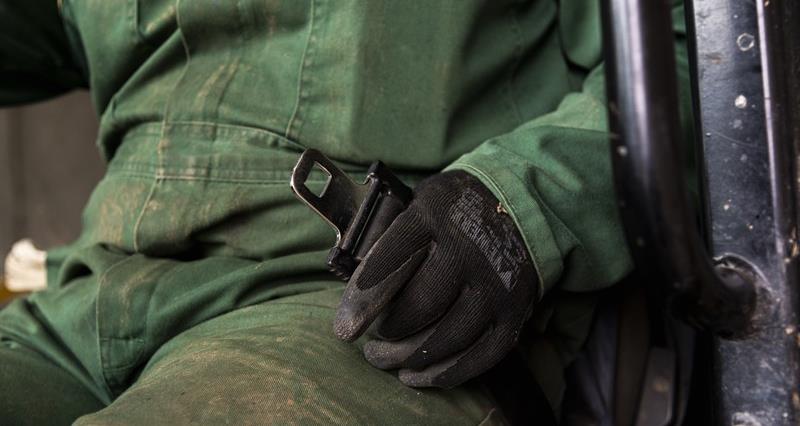In the recording year 2024/25, the HSE reported that there were 27 fatalities in agriculture, forestry and fishing, with seven being connected to the use of ATVs.
Additionally, two of these ATV fatalities involved children. In the past five years, 21 lives have been lost in agriculture due to ATV-related incidents, with on average four deaths per year. Nobody sets out to have an accident and we cannot predict when one will occur, so it is essential to put safety first, especially when using ATVs.
What does the legislation say?
Safety around ATV use is mainly governed by the Provision and Use of Work Equipment Regulations 1998, within the Health and Safety at Work Act 1974. The Act states that operators should have training in the use of the work equipment or machine, and that appropriate PPE or preventative measures should be taken to prevent and manage reasonable hazards involved with the use of the equipment or machine.
Therefore, it is not only good practice to wear a helmet, participate in training, undertake vehicle checks, and have a single rider, but also lawful.
#RideSmartFarmSafe
To raise awareness of ATV safety and highlight simple steps you can take to help reduce the likelihood of an accident, the NFU has joined forces with NFU Cymru, NFU Scotland, the Ulster Farmers Union, and the Welsh Farm Safety Partnership to ensure a unified voice and message across the United Kingdom – #RideSmartFarmSafe.
Wayne Owen, HM Inspector of Health and Safety (Agriculture), Health and Safety Executive, said: “We support and welcome the latest ATV safety campaign launched by the Farm Safety Partnership and National Farmers' Union.
“In the agricultural industry, ATVs remain one of the leading causes of work-related fatalities in Great Britain. In the last year alone, seven people died while using them and tragically, two of them were children.
“No one under the age of 16 should operate adult sized ATVs used in agriculture. However, the number of people killed while using ATVs in recent years are a stark reality and highlight the critical need for proper training, the use of safety equipment like helmets, having a well-maintained vehicle, and adhering to safe riding practices.
“Prioritising ATV safety can help prevent avoidable fatalities and protect the lives of those working in agriculture.
“ on the safe use of ATVs to help farmers stay safe.
“We will continue to work with the industry through Great Britain’s Farm Safety Partnerships and its member organisations, to support the cultural change in farming that is so desperately needed.”
Remember these four messages
A – always wear a helmet

Make sure you are using appropriate head protection when operating an ATV. By wearing a helmet, you are protecting the most vulnerable part of your body should an incident occur.
It is a requirement for employers to provide and ensure the use of appropriate PPE to staff. Section 4.2 of the PPE Regulations extends to self-employed individuals too. For NFU members, see the NFU Spada offer on protective helmets.
T – training

It is essential that anyone using an ATV has completed the necessary training and is competent in its use. Employers are legally obliged to ensure that workers who operate equipment, like ATVs, receive proper training. They must also ensure that only those who have been adequately trained in the safe operation of such vehicles are allowed to use them. These legal duties also apply to the self-employed.
Information on relevant training programmes can be obtained from authorised dealerships, manufacturer websites, , the , , the , as well as from colleges and other training organisations.
provides a wide variety of accredited training providers across the country. Training courses are normally on-site, and take on average 1-2 days. Most colleges that offer an agricultural based course will also offer training courses as well. These are also on-site and take on average 1-2 days.
For a limited time, the FSF (Farm Safety Foundation) has announced a UK-wide bursary to attend a Lantra-accredited ATV training course. The course, for farmers of all ages, will also provide each participant with a high-quality Logic helmet.
Find out more at: .
offers free or discounted training to anyone purchasing a new or used ATV from an authorised UK dealer. This is a great opportunity to attend an HSE recognised training course. As part of its commitment to improving user education, the ATVEA (All Terrain Vehicle Industry European Association) has an online course on ATV safety fundamentals.
Access the course for free at: .
V – vehicle and maintenance checks

Operating vehicles off-road puts extra strain on equipment, making it vital to perform routine safety inspections and upkeep as outlined by the manufacturer. It's particularly important to carry out pre-ride checks, which should include:
- Tyre pressure – ATVs typically run on low pressures (usually between 2–7 psi), and even a slight variation of 1 psi (0.07 kg/cm²) can affect handling and stability. Always use a pressure gauge specifically designed for low readings—these are often provided with the ATV.
- Brakes and throttle – Make sure the brakes stop the vehicle safely and in a straight line, and that the throttle responds smoothly no matter the steering angle. In agricultural settings, brake components can wear out quickly, so they require proper servicing and timely adjustments.
S – single rider

The extended seat on a standard sit-astride ATV is designed to let the rider move their body forward or backward to adapt to varying terrain angles – termed active riding. It is not intended for carrying additional passengers.
There should only ever by one rider when using a sit-astride ATV, having any more is not only dangerous, but breaking the law.
What about under 16s?
The Prevention of Accidents to Children in Agriculture Regulations 1998 also applies to ATV use. These regulations highlight that it is illegal for a child under the age of 13 to travel or operate a tractor or self-propelled agricultural machine, which includes ATVs. When a child turns 13, parts of this regulation is lifted. The child is permitted, with appropriate training, to operate a low powered ATV that is of a size suitable for a child.
Some ATVs may have additional age restrictions, such as a minimum operating age of 16 cited in the operator’s manual, and these are often clearly visible on the ATV. Insurance providers may also have their own age restrictions.
Finally, you are your farms most valuable asset, so take care of yourself as much as you would the farm. Cutting corners and rushing often leads to accidents, and in too many cases, fatalities.
Remember, #Take5StayAlive before undertaking any task, especially when an ATV is involved.







